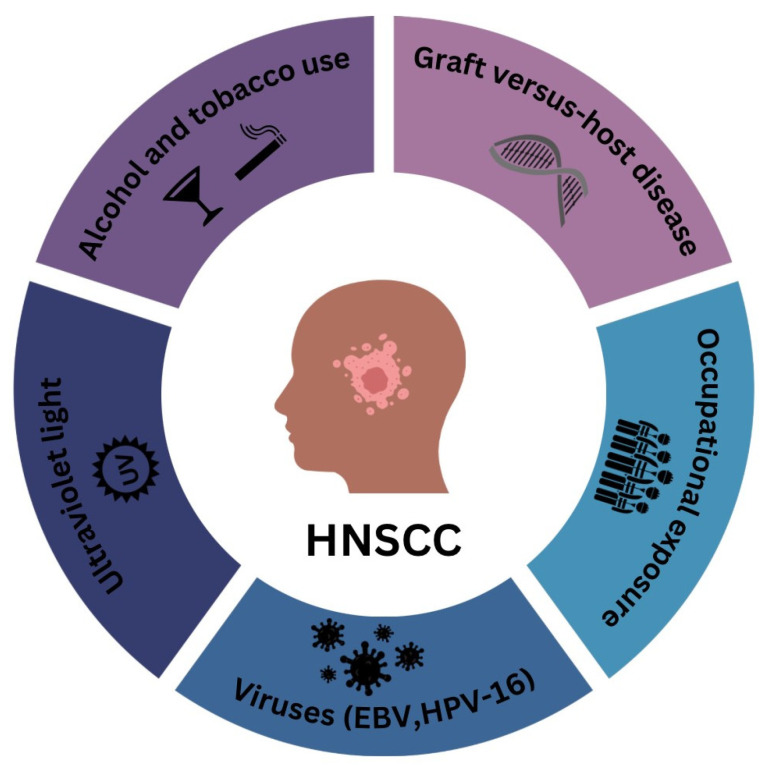Figure 1.
Risk factors for the development of head and neck squamous cell carcinoma. The image outlines the risk factors for head and neck squamous cell carcinoma (HNSCC), including alcohol and tobacco use, graft-versus-host disease, ultraviolet (UV) light, viruses, and occupational exposure. Alcohol and tobacco use are major risk factors, as they contain carcinogens that can lead to cellular mutations and cancer. Graft-versus-host disease creates a proinflammatory environment where donor immune cells attack the recipient’s tissues after an allogeneic stem cell transplant. This chronic inflammation and immune dysregulation increase the risk of secondary malignancies like HNSCC. Ultraviolet (UV) light causes direct DNA damage, leading to mutations and cancer. Viruses such as Epstein–Barr Virus (EBV) and human papillomavirus (HPV-16) are known to induce oncogenic transformations in cells, significantly raising the risk of HNSCC. Occupational exposure involves contact with carcinogenic substances in certain industries, which raises the risk of cancer development. Examples include asbestos fibers, which increase HNSCC risk, wood dust exposure in carpentry, which raises the risk of nasopharyngeal cancer, and exposure to industrial chemicals like formaldehyde and solvents in the textile, rubber, and plastic industries, as well as nickel refining and processing.

